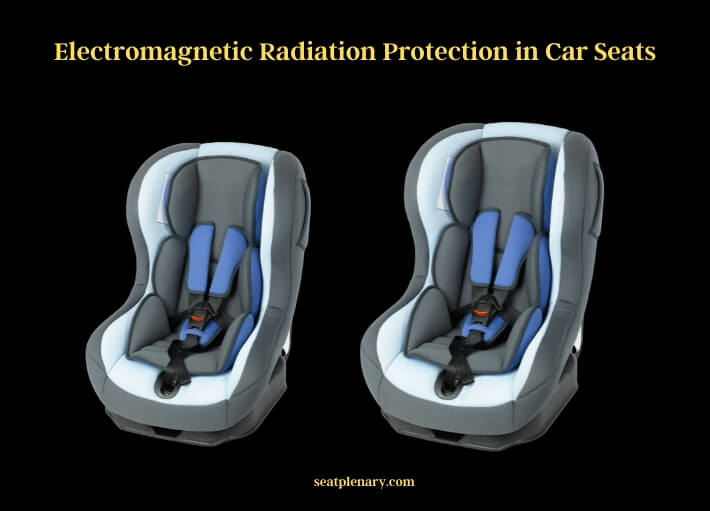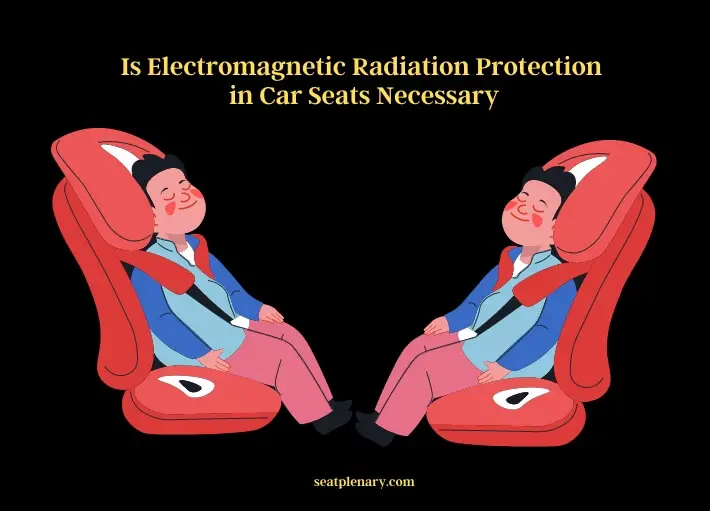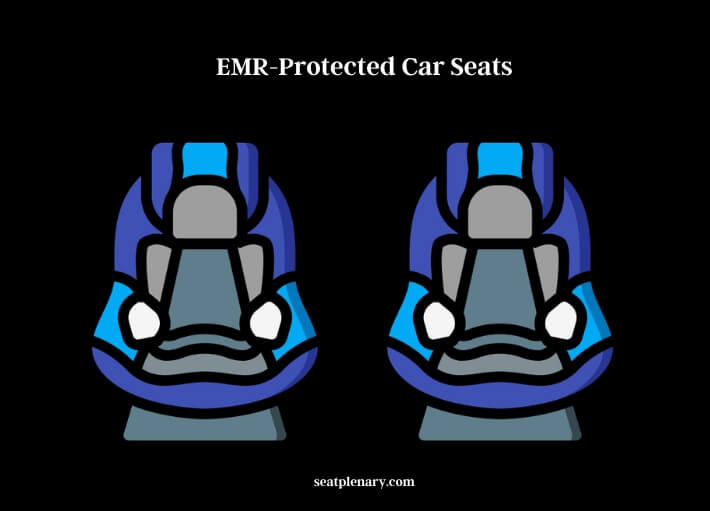Electromagnetic radiation (EMR) is a topic that’s been gaining traction in recent times, especially with its relevance in our technology-driven world. But does this relevance extend to our car seats? How necessary is it to incorporate protection against electromagnetic radiation in them?

EMR is everywhere, emanating from our mobile devices, computers, and yes, even from our cars. This has led to an increased demand for protection against this invisible menace. However, when it comes to car seats, the question remains: is it necessary? Let’s find out.
Understanding Electromagnetic Radiation (EMR)
What is EMR?
EMR, as defined by Wikipedia, is a form of energy released by certain electromagnetic processes. These include everything from the radio waves that carry your favorite tunes, to the visible light we see, to the x-rays used in hospitals.
Sources of EMR
Everyday sources of EMR include not only technological devices like mobile phones and Wi-Fi routers, but also natural phenomena like sunlight. In cars, electronic systems such as the car’s radio, GPS, and even the engine can emit EMR.
EMR and Health Concerns
Is EMR Harmful?
While high-frequency radiation like x-rays and ultraviolet rays can be harmful, the lower-frequency EMR typically emitted by everyday devices is generally considered safe. However, prolonged or intense exposure could potentially lead to health issues.
Potential Effects of EMR on Health
Long-term exposure to EMR can potentially lead to several health issues, including headaches, insomnia, and in severe cases, diseases such as cancer. It’s worth noting that these health effects are often associated with higher-frequency radiation, which is far more potent than what we typically encounter daily.
EMR in Cars
How much EMR is in your car?
While it’s true that cars, like many other modern technologies, emit a certain amount of EMR, the levels are usually low and within internationally accepted safety standards.
EMR from Car Seats?
The primary concern isn’t so much the car seats themselves, but the electronic systems within and around them. As these systems increase in complexity, so too does their potential EMR output.
Electromagnetic Radiation Protection in Car Seats
What is It?
Electromagnetic radiation protection for car seats is typically a type of shielding integrated into the fabric or structure of the seat. Its aim is to reduce or block EMR emissions that could potentially affect the passenger.
How Does it Work?
This protection usually works by creating a barrier that either reflects or absorbs EMR, thus reducing the amount that reaches the passenger. This barrier could be a type of metallic thread woven into the fabric, a coating on the surface, or a physical shield integrated into the seat.
Is Electromagnetic Radiation Protection in Car Seats Necessary?
In an ideal world where safety trumps all other considerations, any measure that could potentially protect our health would be embraced. In reality, we have to weigh the benefits against the cost and practicality.

Current Research on EMR and Car Seats
While there have been studies on the effects of electromagnetic radiation on health, research specific to EMR emissions from cars and their seats is still somewhat limited. It’s worth noting that no studies to date have definitively linked low-frequency EMR from cars to any specific health problems.
The Industry’s Take on EMR Protection
Car manufacturers have yet to fully embrace EMR protection in their designs. While some high-end models do incorporate some form of shielding, the vast majority of cars on the market do not. This could be due to a lack of consumer demand, cost considerations, or a view that the benefits of such protection are not sufficiently established.
Considerations for Choosing EMR-Protected Car Seats
If you’re still on the fence about EMR-protected car seats, here are some points to ponder:
The “Better Safe Than Sorry” Approach
If you’re of the mindset that it’s better to be safe than sorry, then EMR-protected car seats might be worth considering. After all, they won’t harm you and could potentially provide some protection.
Cost Implications
Given that EMR-protected car seats are not yet the norm, they tend to be more expensive than their non-protected counterparts. It’s worth weighing up whether the potential benefits justify the additional cost.

Peace of Mind
Even if the risk is low, some people may still worry about potential exposure to EMR in their cars. For these individuals, having EMR protection in their car seats could provide peace of mind.
The Future of EMR Protection in Car Seats
Advancements in Technology
As technology continues to advance, we can expect to see more effective and affordable EMR protection options. This could include new materials with better shielding properties or smarter design solutions that minimize EMR emissions from car systems.
Increased Awareness and Demand
As public awareness about EMR and its potential health impacts grows, so too might demand for EMR-protected car seats. This could drive more manufacturers to incorporate such protection into their designs.
Is the Term “Nose Bleeds” Related to the Safety Features of Car Seats?
No, the term “nose bleeds” is not related to the safety features of car seats. “Nose bleeds” actually refers to the origins of nosebleed seats, which are the highest and often cheapest seats in a stadium or theater. These seats are so high up that they might make your nose bleed.
Frequently Asked Questions (FAQs)
What is Electromagnetic Radiation (EMR)?
EMR is a form of energy released by certain electromagnetic processes. It includes everything from radio waves to x-rays.
Does my car emit EMR?
Yes, cars do emit a certain amount of EMR, mostly from their electronic systems. However, the levels are typically low and within safety standards.
Are EMR-protected car seats common?
No, at present, EMR-protected car seats are not the norm and are mostly found in high-end car models.
How does EMR protection in car seats work?
EMR protection in car seats works by creating a barrier that reflects or absorbs EMR, thus reducing the amount that reaches the passenger.
Is it necessary to have EMR protection in car seats?
While there’s ongoing debate about this, current research and industry practices suggest that it’s not deemed necessary given the low levels of EMR typically emitted by car systems.
What does the future hold for EMR protection in car seats?
The future may see more effective and affordable EMR protection options, increased public awareness about EMR, and potentially greater demand for EMR-protected car seats.
Conclusion
While there is certainly a growing awareness and concern about the potential health effects of electromagnetic radiation, the necessity of EMR protection in car seats is not as clear-cut. Given the relatively low levels of EMR emitted by cars and their seats, many argue that additional protection is unnecessary. However, for those who prefer an extra layer of safety, or simply for peace of mind, EMR-protected car seats could be a worthwhile consideration.
As with many things in life, it boils down to a personal decision based on your level of concern, your assessment of the potential risks, and your willingness to pay for added protection. As technology advances and more research is conducted, the debate over EMR protection in car seats will likely continue. One thing’s for sure: as long as we live in a world surrounded by electromagnetic fields, the conversation around EMR protection isn’t going anywhere anytime soon.
Read more:
